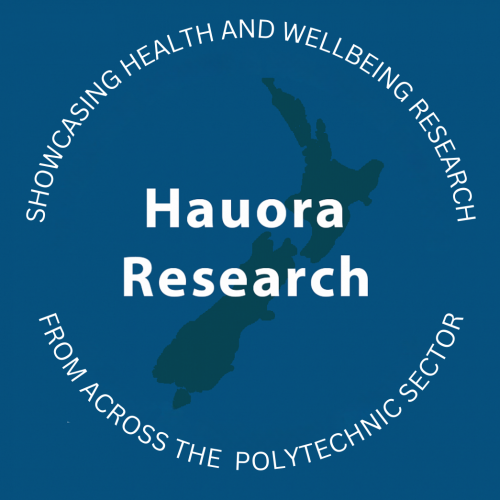
Nurse practitioners a conduit to timelier patient care in surgical settings
Toi Ohomai: In 2019, most of New Zealand’s approximately 360 nurse practitioners worked in primary health care, and to a lesser extent, aged care.
Only a small number – approximately 15 – worked in surgical settings, and there is still little research exploring the role of nurse practitioners in this area.
To better understand their role and the way it is perceived, Roseanne Sadd, a Bachelor of Nursing Lecturer from Toi Ohomai Institute of Technology, undertook research in collaboration with Grace Hospital, a private surgical hospital in Tauranga.
‘I was interested in exploring the impact on patients in pre and post-operative care as well as the leadership role played by nurse practitioners,’ says Sadd.
Nurse practitioners are registered nurses who have undertaken a clinical masters with a prescribing pathway. Once qualified, nurse practitioners operate with a greater level of autonomy and bring advanced clinical competency to the ward setting.
‘One of my motivations for doing the research is that it’s a quasi-medical role, and there is a risk that they’re just seen as a cheaper version of a doctor or house surgeon’, explains Sadd.
Grace Hospital introduced nurse practitioner internships in 2013, and now have two nurse practitioners working within the hospital, and an ongoing internship programme.
The research project was designed in collaboration with Kirstie Cooke, one of the two nurse practitioners at Grace Hospital. It contained three different components with data collected over four weeks – an activity log to understand the day-to-day role of nurse practitioners, a patient satisfaction survey to gauge the impact on the patient journey, and a series of focus groups and interviews with staff to determine their role, in terms of both leadership and within the clinical environment.
Sadd worked with the two nurse practitioners to itemise the types of activities they undertook, categorising them into indirect (education, professional development, report writing, clinical support) and direct care (clinical assessments, interventions, hospital transfers). Approximately 45% of activity types were categorised as indirect, and 55% as direct care. The log did not record time spent on activities, however the nurse practitioners reported that the bulk of time was spent on direct care activities.
‘What it showed was that a lot of what they did was day-to-day on the ward, you could see similarities with a house surgeon role in the way they deal with things as they come up,’ says Sadd.
Sadd also undertook patient qualitative satisfaction surveys with 23 inpatients who had recurring involvement with the nurse practitioners. Patients indicated that they appreciated the timeliness of their care, some patients did not know what was different about the nurse practitioner role, other than they seemed to know a lot and had time to talk to them. Actual patient outcomes were not measured.
The third element of the study involved three focus groups with 12 registered nurses and a fourth focus group with three ward managers as well as a further eight interviews with consultant surgeons and anaesthetists. The questions throughout all the discussions were similar.
Sadd and nurse practitioner, Kirstie Cooke, undertook a thematic analysis of the results.
‘Both management and nursing staff were quite proud of the fact that they had their own nurse practitioners who were ‘walking the walk and talking the talk’ with the doctors.
'Consultant surgeons and anaesthetists knew that patients were getting timely assessment and intervention. Instead of being called to triage a patient, for example, if blood pressure was low, they would be called to notify them of the intervention undertaken. The nurse practitioner was viewed as a conduit or bridge between the nurses on the ward and the surgeons and anaesthetists,' says Sadd.
Sadd explains that there was a high convergence between the results of the three studies. She split the outcomes into two categories – the nurse practitioner as clinical leader and as clinical expert.
In their role as clinical leader, registered nurses saw them as role models, and felt strongly that the nurse practitioners were nurses not quasi-doctors. They were seen as a leader in the ward setting, they wrote clinical reviews and reports, acting as a central source of information on the ward. They had the support and trust of patients, nurses, managers, and surgical staff, providing reassurance to all four groups. The role exceeded expectations and there was the potential to expand their function. They brought collegiality to the team due to the bridging role they played.
In their role as clinical expert, they were able to provide a comprehensive assessment, detailing care plans and prescribing medications. They developed the critical thinking of the registered nurses, encouraging them to undertake a higher level of assessment.
Overall, nurse practitioners were viewed as an integral part of the patient journey, acting as clinical experts and professional leaders, and providing timely assessments and interventions.
The research reinforced the value of the role of nurse practitioners at Grace Hospital and also showed the potential for more nurse practitioners in surgical settings at other hospitals in New Zealand.
- Roseanne Sadd will present the research virtually at the upcoming virtual ICN NP/APN Network Conference, Canada in August 2021.
- Roseanne Sadd is a registered nurse and has been a lecturer within the Nursing Department at Toi Ohomai for almost 10 years. Roseanne has a Master of Health Management and a Postgraduate Diploma in Advanced Nursing Practice. She teaches inpatient and ambulatory care with an evidence-based practice focus. Roseanne has experience in peri-operative surgical nursing both in public hospitals and private healthcare. Contact Roseanne Sadd.
- Visit Toi Ohomai's website.

